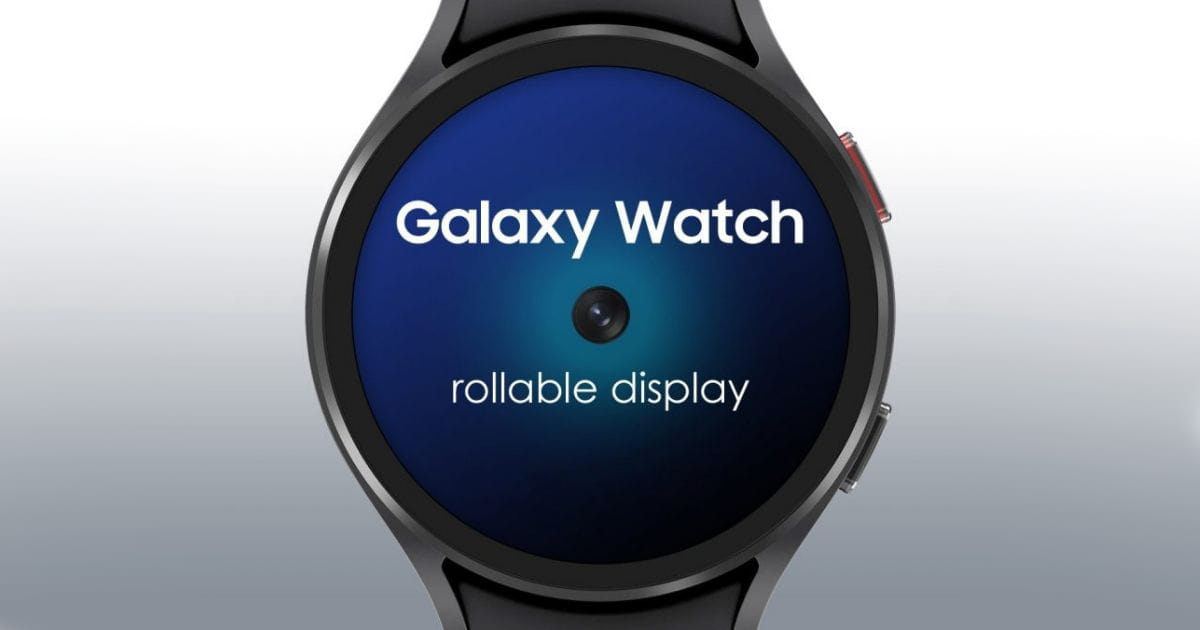What We Can Expect From Samsung’s Rollable Smartwatch
This week, a new leak revealed Samsung’s upcoming device lineup for 2022, which featured a number of interesting products — including a rollable smartwatch — as part of their plan to ship more wearables next year. Indeed, the South Korean firm aims to produce 19 million smartwatches, alongside 33.6 million tablet units and 23 million wireless earphones.
According to LetsGoDigital, Samsung filed for a new smartwatch’s patent back in June with the World Intellectual Property Office, which had only been made publicly available on December 9. The concept images show a two-part Galaxy Watch with a rollable, circular screen that can be extended by pressing the crown, transforming it into an oval shape that is almost 40% bigger in size. Aside from being ideal for watching videos, other experts speculate that the watch may be able to fit multiple optical sensors and a built-in flash for smartwatch’s photo and video camera.

Currently, there are no details on the device’s name and release date, as it’s still not quite off the drawing board; plus, it could be one of Samsung’s many experiments with flexible display. However, it’s not impossible that we’ll get more information about this product in the next Galaxy Unpacked event. Remember how Samsung surprised everyone by launching their Galaxy S21 5G smartphones last January 2021, instead of their usual late February announcement window? So while we wait for more news on this rollable smartwatch, here are a few things we can speculate about it based on recent Samsung devices:
Software
Smartwatches have been around for years now, but they haven’t really evolved much since their inception, other than packing in more sensors. In terms of the smartwatch operating system, we can guess that the partnership between Samsung and Google will continue to invigorate Wear OS, which merges select features from Samsung’s Tizen OS, so future Samsung watches will run Wear instead of Tizen. With Google adding more apps and updating existing ones for robust capabilities, the partnership allows Samsung to leverage more desirable apps, as there aren’t too many on their bespoke app store for Tizen. We’ll also expect to see more battery-efficient smartwatches to meet full-time workloads like heart-rate sensing.
Hardware
Samsung has always been researching and developing flexible screen technology, where a device can expand when needed, then reduce to save space. Given that a rollable watch screen would serve as a miniature smartphone on the wrist, Samsung will likely invest in smart hardware design, especially with regards to the printed circuit board (PCB); the PCB is the base of insulating materials that connect conducting components in tiny electronic units. Samsung could possibly utilize a rigid-flex PCB design for this new smartwatch, as rigid-flex technology is perfect for small, lightweight consumer electronics. Combining rigid boards with flexible ones on polyester allow for reduced weight and space savings, but it can pose design challenges for durability, water and dust resistance. We’re eager to see how Samsung will work around these factors for the rollable smartwatch.
Other Apps and Features
Naturally, a rollable display can offer more content than an ordinary smartwatch screen. We’d be able to see an expanded calendar, a more detailed music player, or more granular fitness tracking information. It would also be nice to have an advanced model that has standalone capabilities independent of the smartphone, like LTE or contactless payments, so you can leave your phone behind. In terms of specific features, we’d like the body composition sensor from Samsung’s Galaxy Watch 4 to make a comeback. This Bioelectrical Impedance Analysis sensor checks your health metrics from over 2,400 points to paint a detailed, virtual picture of your body, which is great for planning health and fitness routines.


